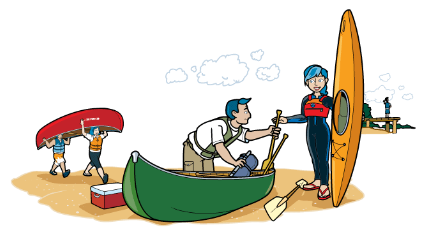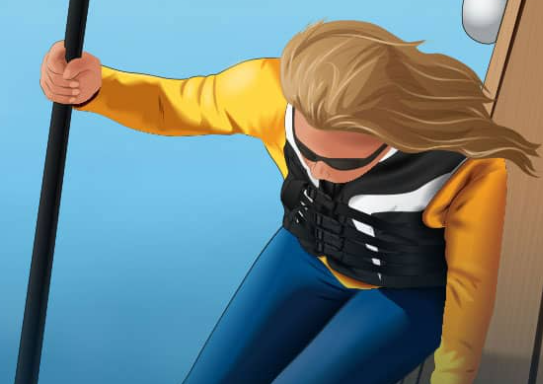What you know can literally save your life and makes you a safer boater.
The Oregon State Marine Board offers a great introduction to the waterways with a free online paddling course that's approved by the state and recognized by the National Association of State Boating Law Administrators (NASBLA).

1. The Paddle Sports Safety Course, offered through BoaterExam.com, covers state boating laws, rules of the road, how to read the waterway, what to do in case of an emergency, and other tips to enhance boaters' knowledge base and operating skills. Please note that this program does not meet the requirements for mandatory motorized education and is geared toward non-motorized education.

2. Boat Ed's Official Paddlesports Safety Course covers everything a paddlesports enthusiast needs to know to stay safe while using canoes, kayaks, and stand-up paddleboards. Developed in partnership with the American Canoe Association (ACA), this course teaches you what to do before you go out paddling and how to have a safe and fun time. Please note: this course does not meet the requirements for mandatory motorized education and is geared toward non-motorized education, and does not include state rules for paddling in Oregon. Select the next accordion item below to review the required equipment and rules.
Spanish version: Tenga en cuenta: este curso no cumple los requisitos para la educación motorizada obligatoria y está orientado a la educación no motorizada y no incluye las normas estatales para remar en Oregón. Seleccione el siguiente elemento de acordeón a continuación para revisar el equipo y las reglas requeridas.
3. The American Canoe Association's Paddlesports Online Course
Curso de Seguridad DE REMO
This online training program is brought to you through a partnership between the ACA and the U.S. Coast Guard and was developed to meet the ACA standards for paddlesports safety education. This course is mobile-friendly from start to finish and is designed to work on your smartphone, tablet, laptop, or desktop computer.
Topics included:
Shopping for paddling equipment
Securing a boat to your vehicle
Trip Planning
Filing a Float Plan
On-water Group Management
Waterway Hazard Identification
Challenging Weather
Temperature Regulation & Self Care
Rescue Priorities & Protocol
And more!
You may complete the course at your own pace. The course can be completed in one sitting, or you may save your progress and return to the course later. Most students finish the course in about 20 minutes. There is no minimum age requirement to take this online course. This course does not include state rules for paddling in Oregon. Select the next accordion item below to review the required equipment and rules.
Upon successful completion of the course, you will receive a completion certificate.
This online course is produced under a grant from the Sport Fish Restoration and Boating Trust Fund, administered by the U.S. Coast Guard.
…
Este programa de capacitación es presentada por la asociación entre la ACA y la Guardia Costera de los EE. UU. y fue desarrollado para cumplir con los estándares de la ACA para la educación sobre seguridad en los deportes de remo. Este curso es compatible con dispositivos móviles de principio a fin y está diseñado para funcionar en su teléfono móvil, tableta, computadora portátil o computadora de escritorio.
Temas incluyen:
Compra de equipo de remo
Asegurar un barco a su vehículo
Planificación de viajes
Presentación de un plan de flotación
Manejo de grupos en el agua
Identificación de peligros en vías fluviales
Clima desafiante
Regulación de temperatura del cuerpo
Prioridades y Protocolo de Rescate
¡Y más!
Puede completar el curso a su propio ritmo. El curso se puede completar en una sola sesión o puede guardar su progreso y regresar en una fecha posterior. La mayoría de los estudiantes terminan el curso en unos 20 minutos. No hay un requisito de edad mínima para tomar este curso.
Al completar con éxito el curso, recibirá un certificado de finalización.
Este curso fue producido con una subvención del Sport Fish Restoration and Boating Trust Fund, y administrado por la Guardia Costera de los EE. UU.
Este curso no incluye las normas estatales para remar en Oregón. Seleccione el siguiente elemento de acordeón a continuación para revisar el equipo y las reglas requeridas.